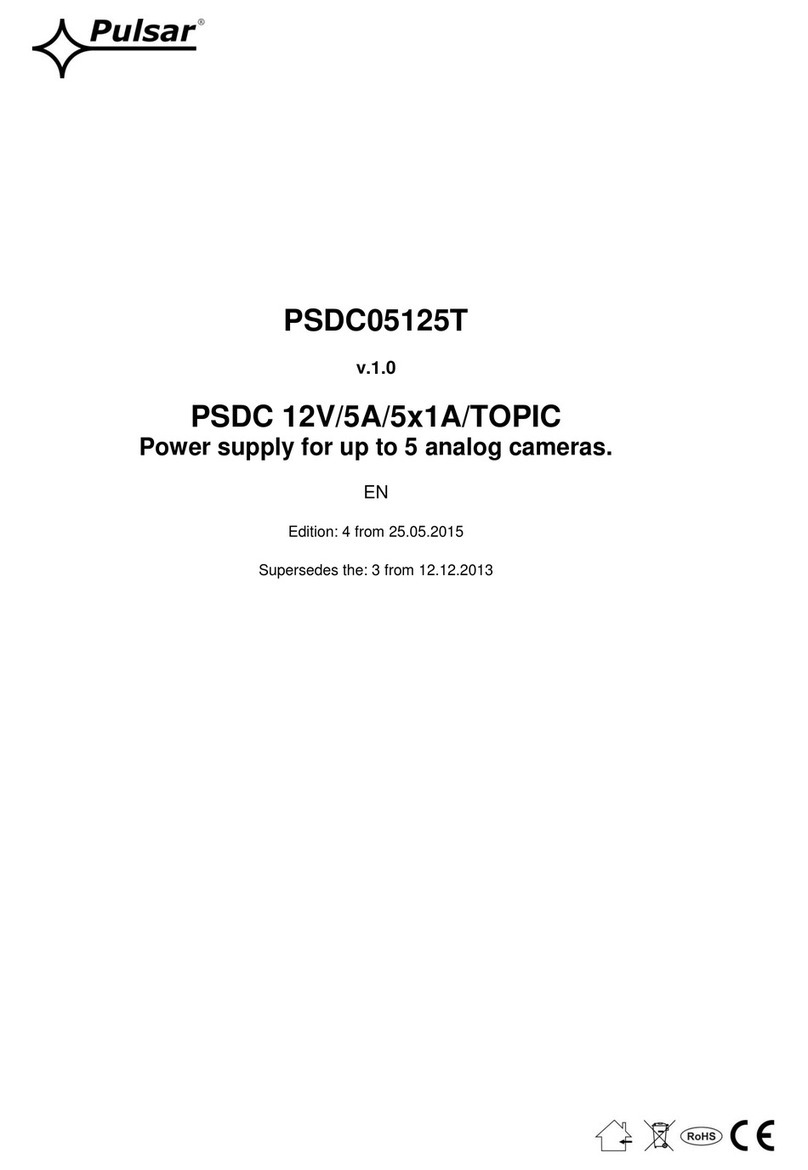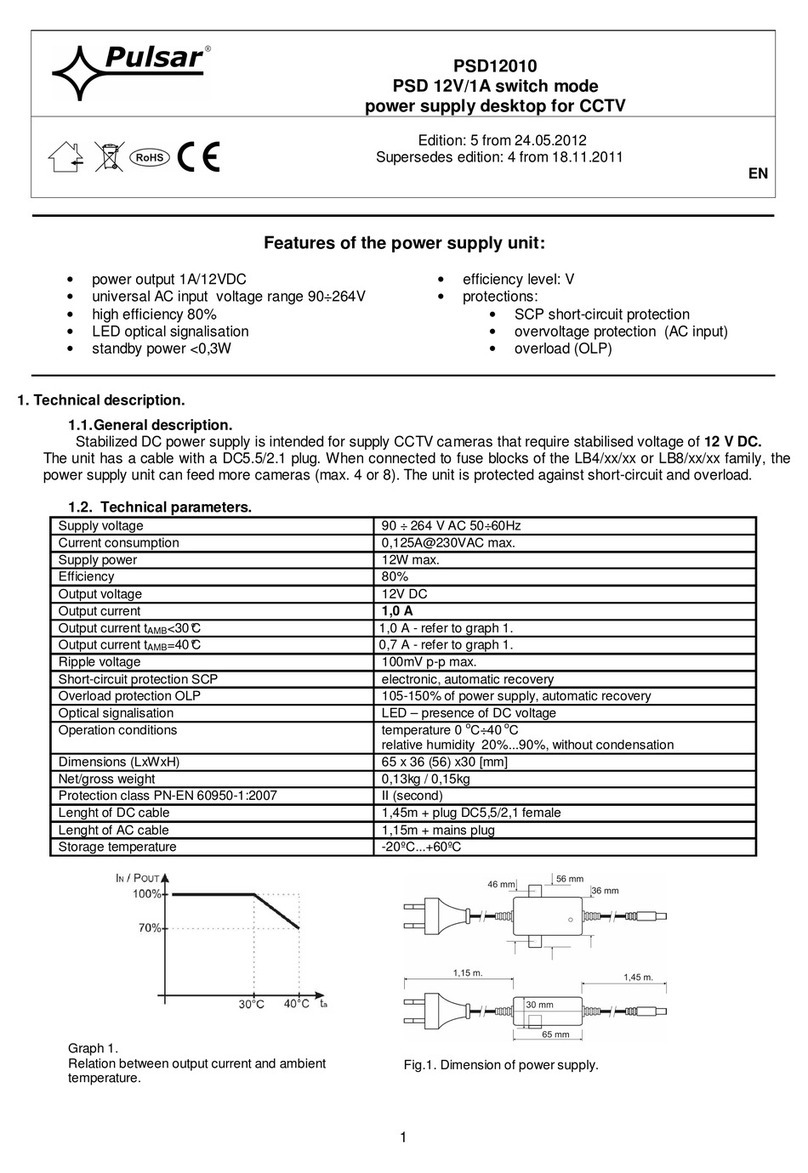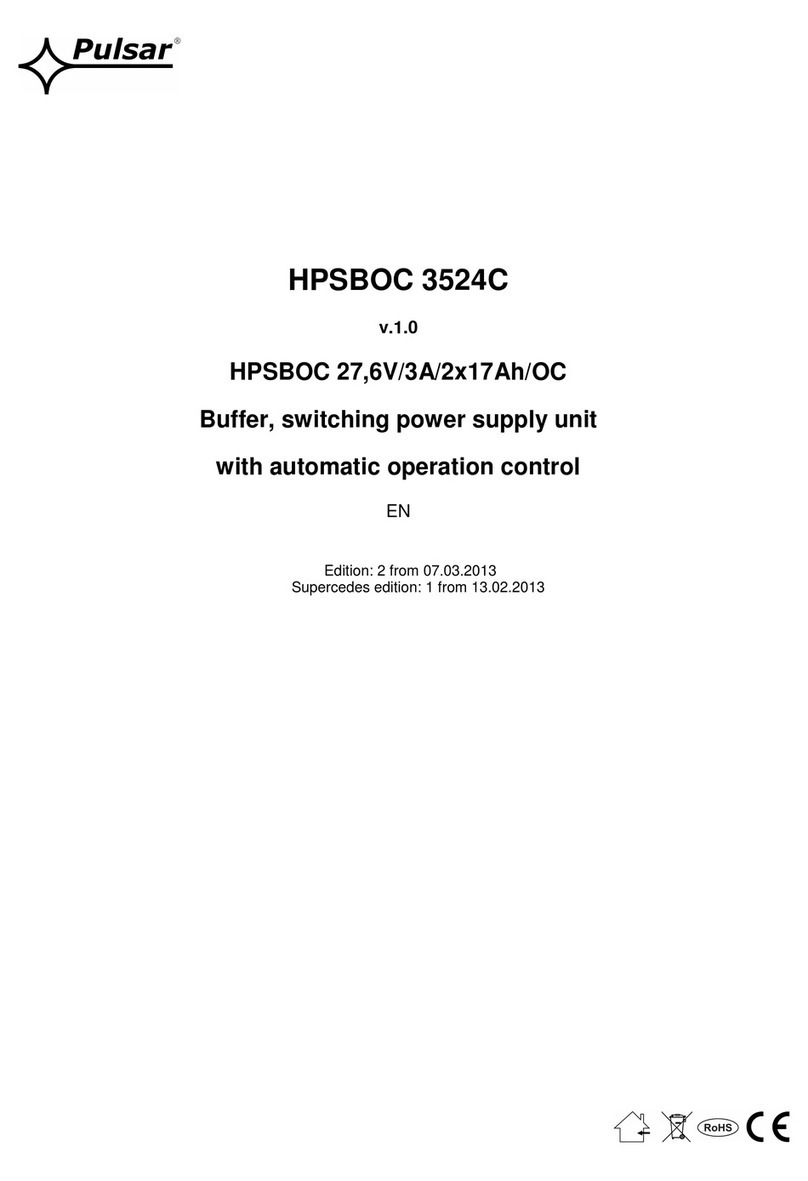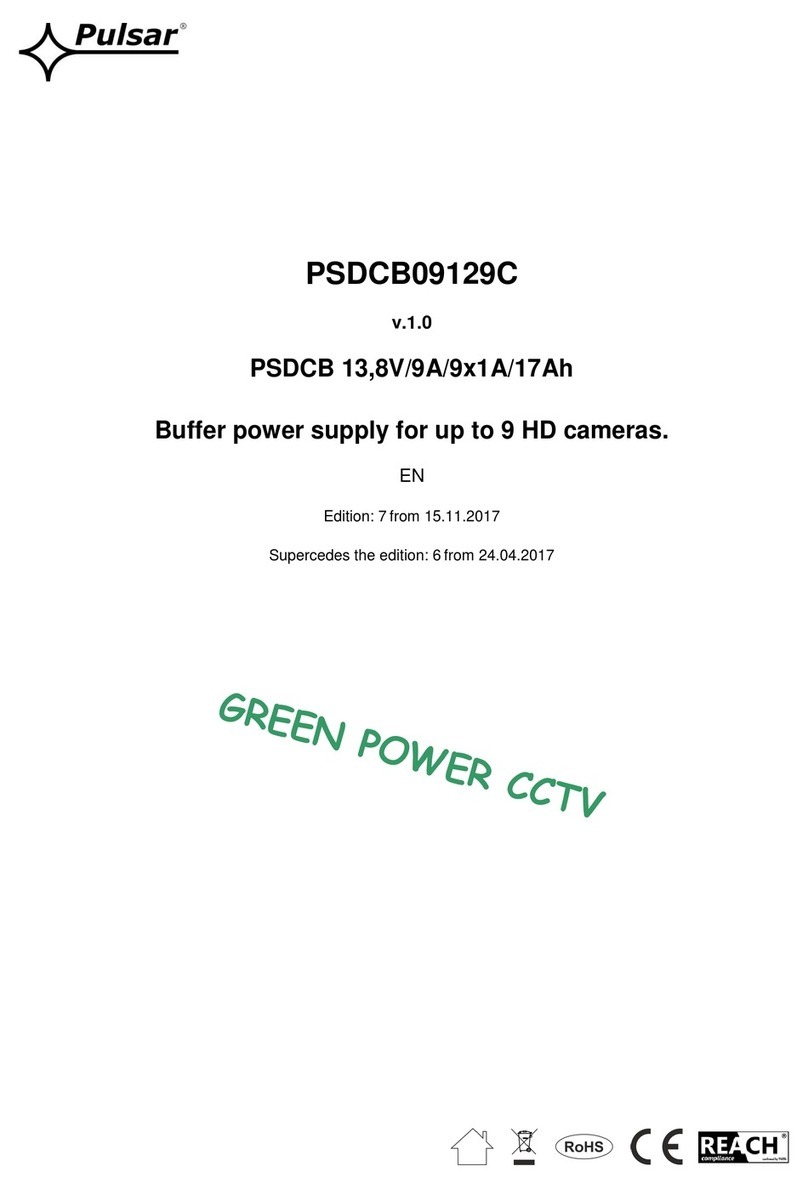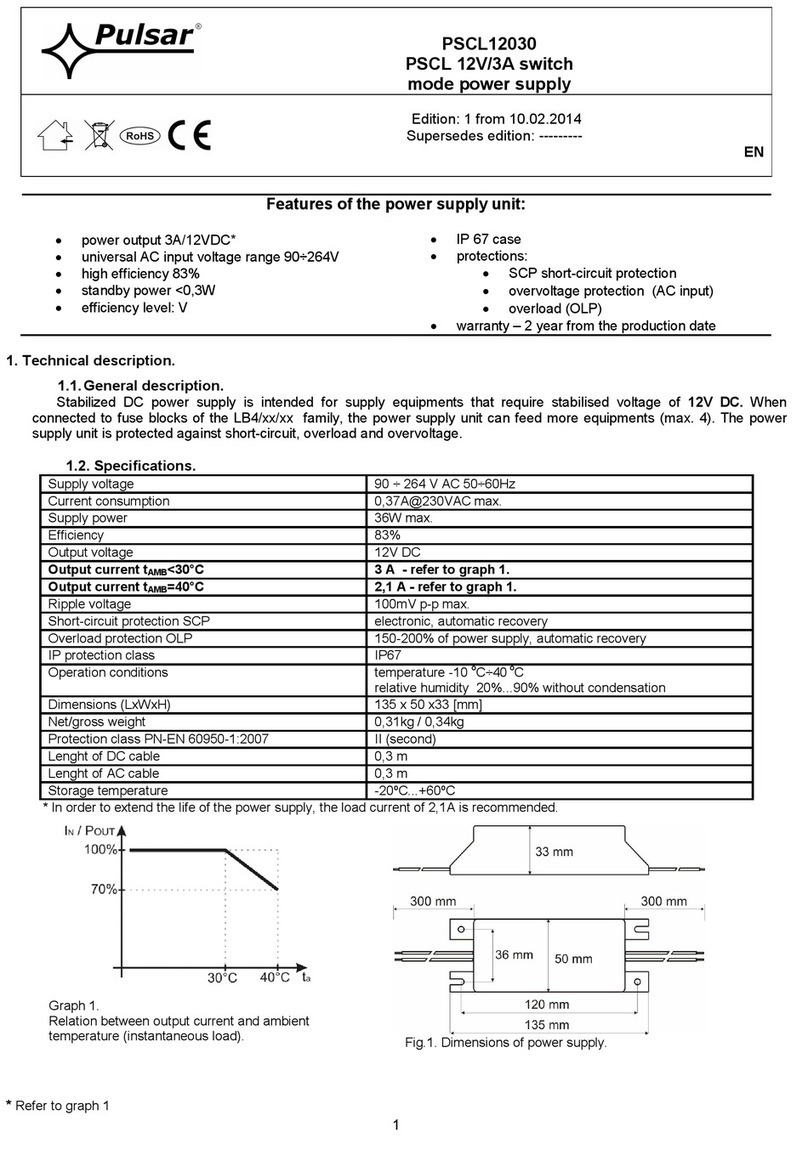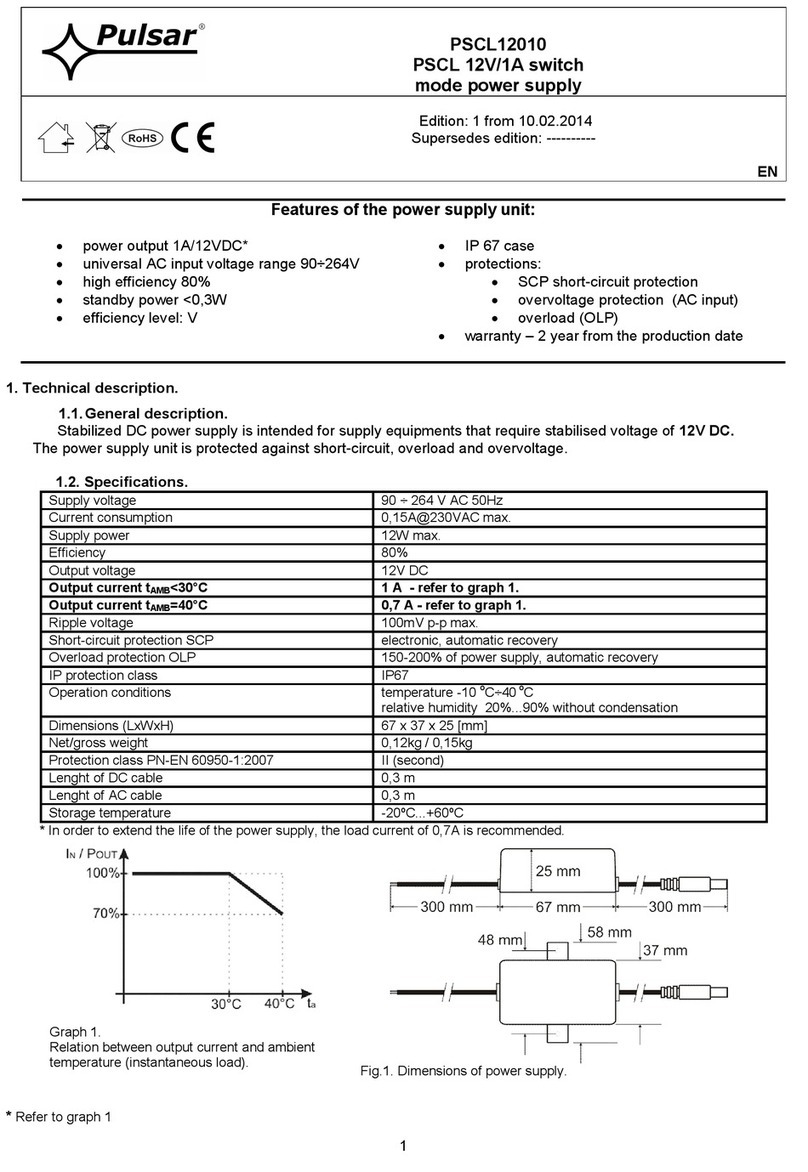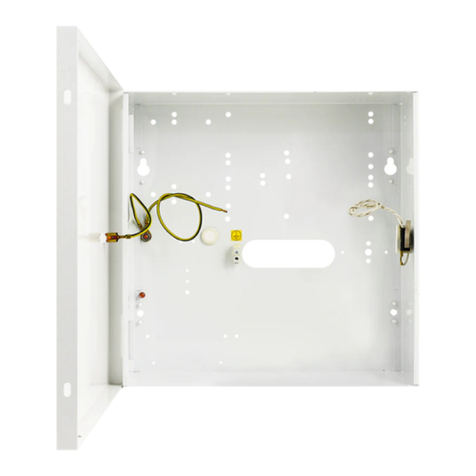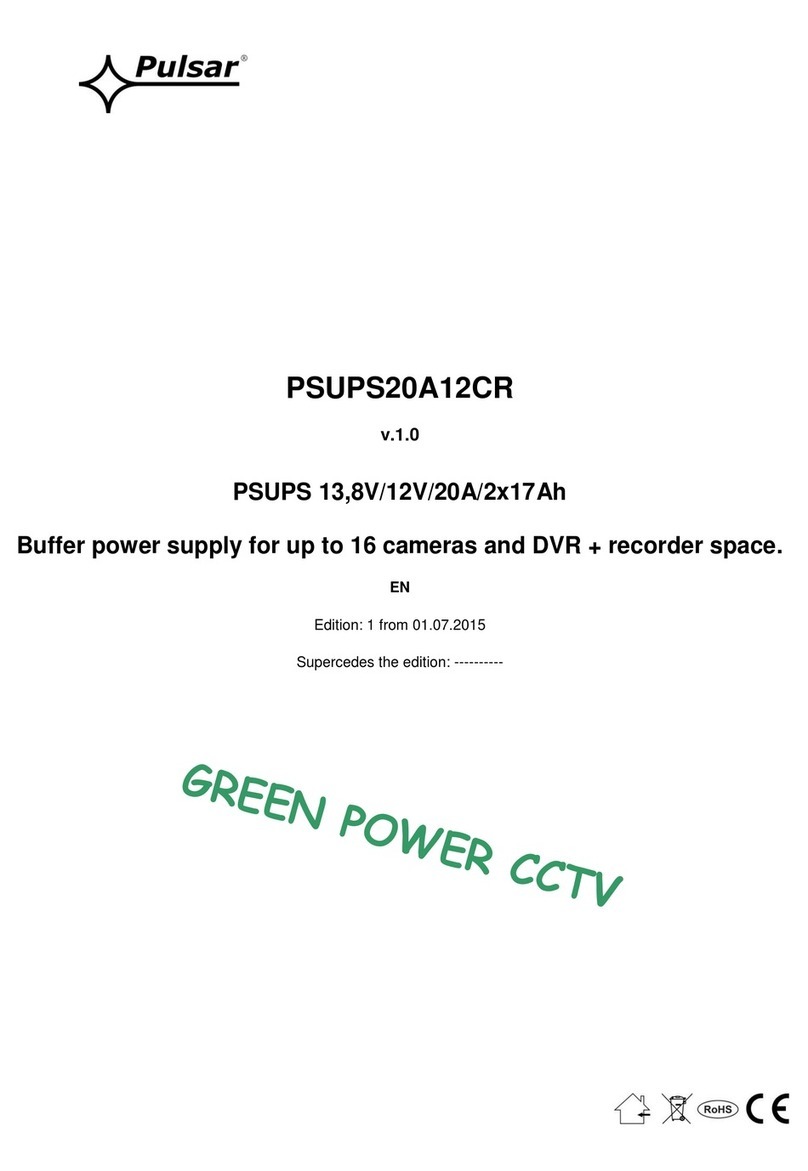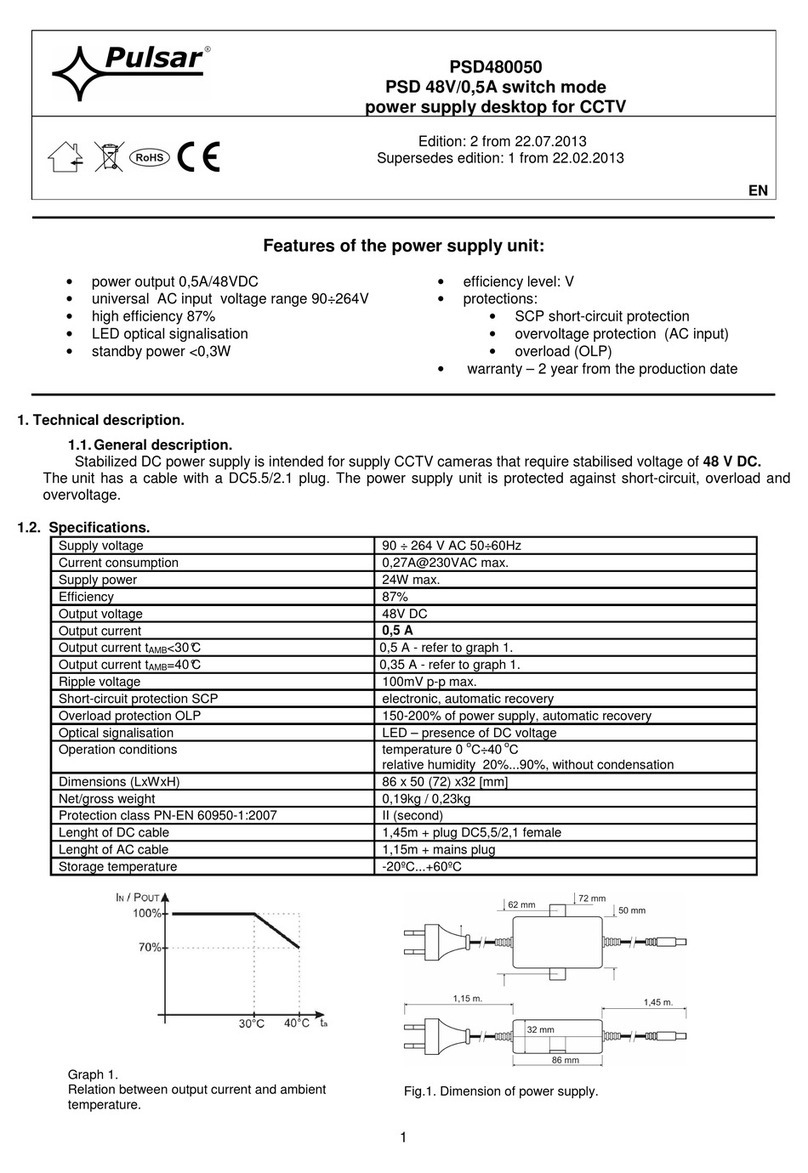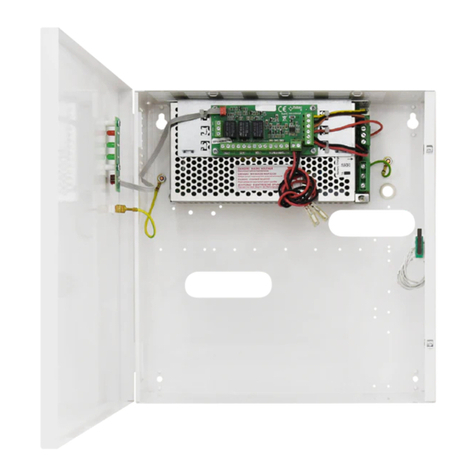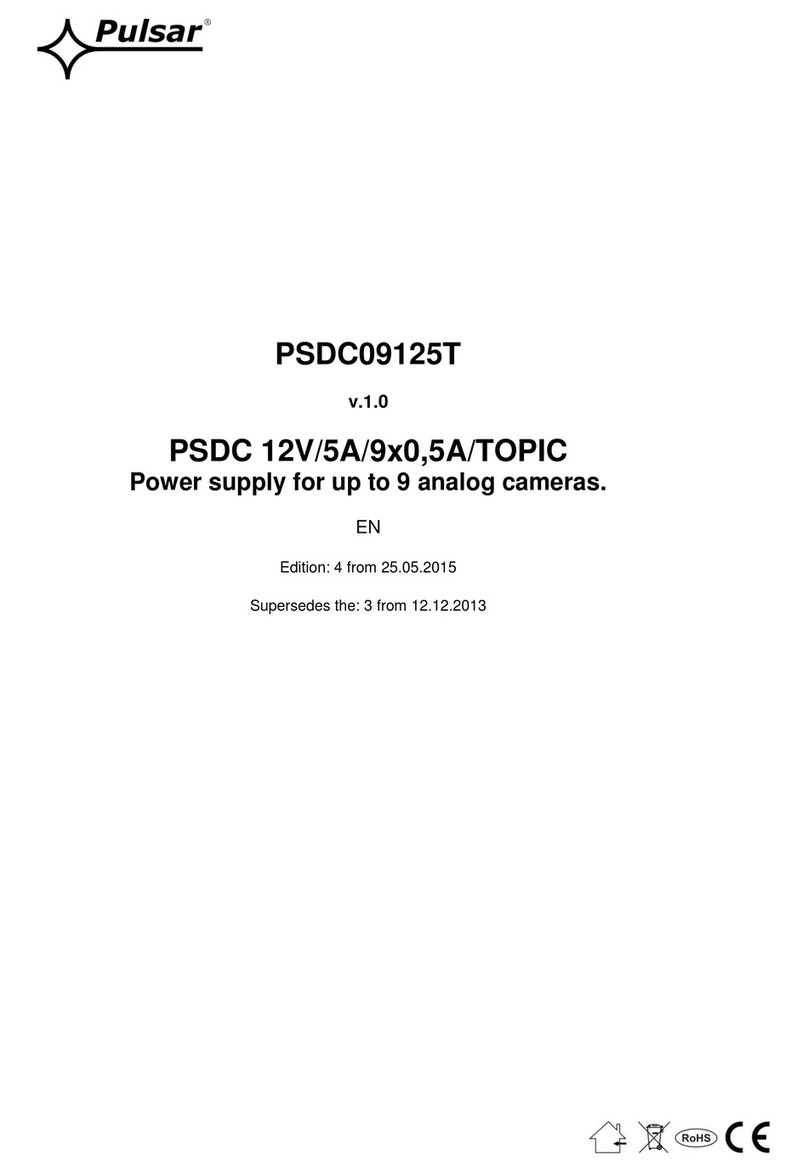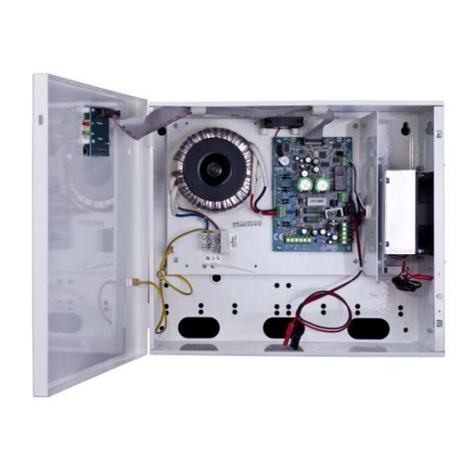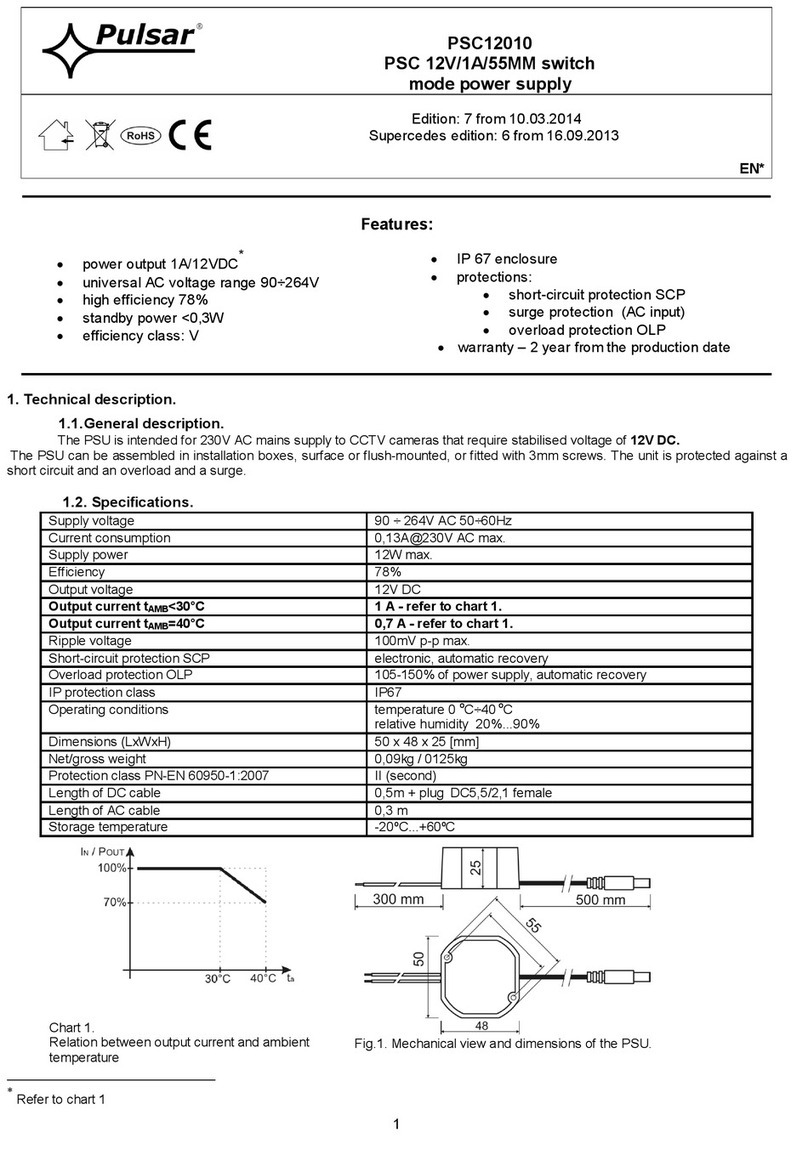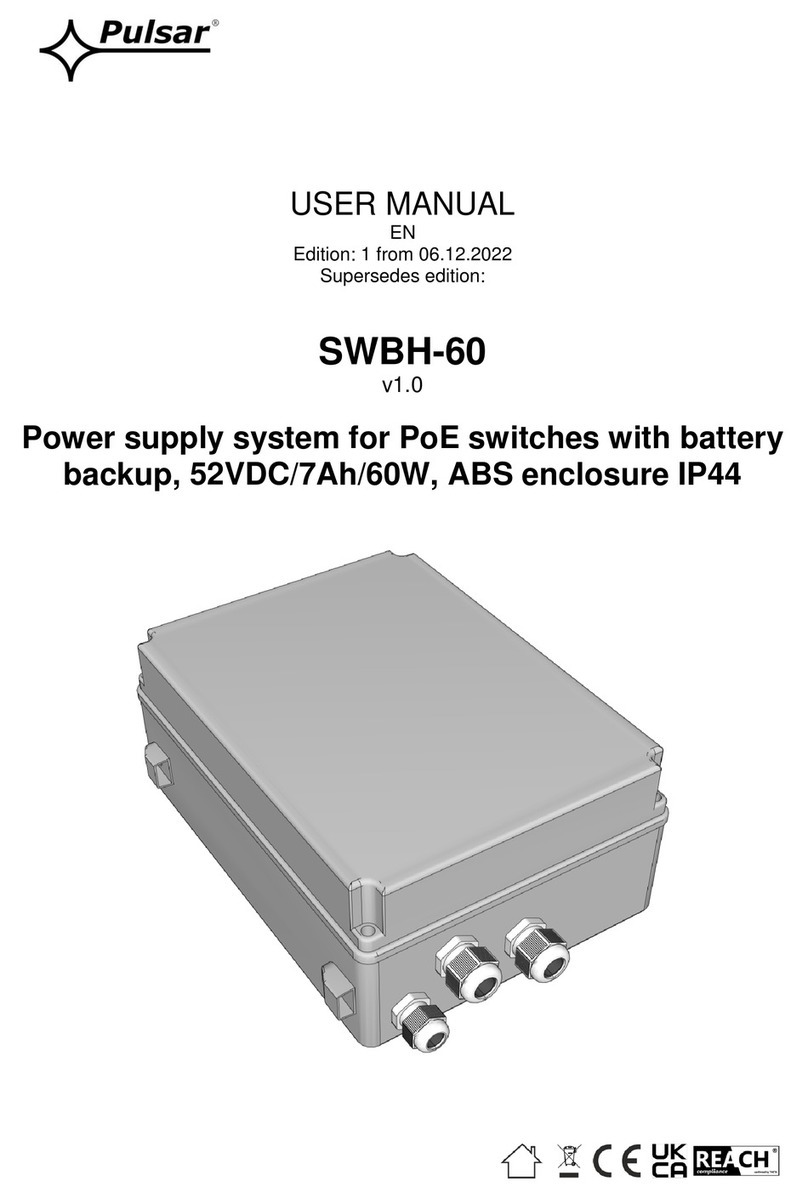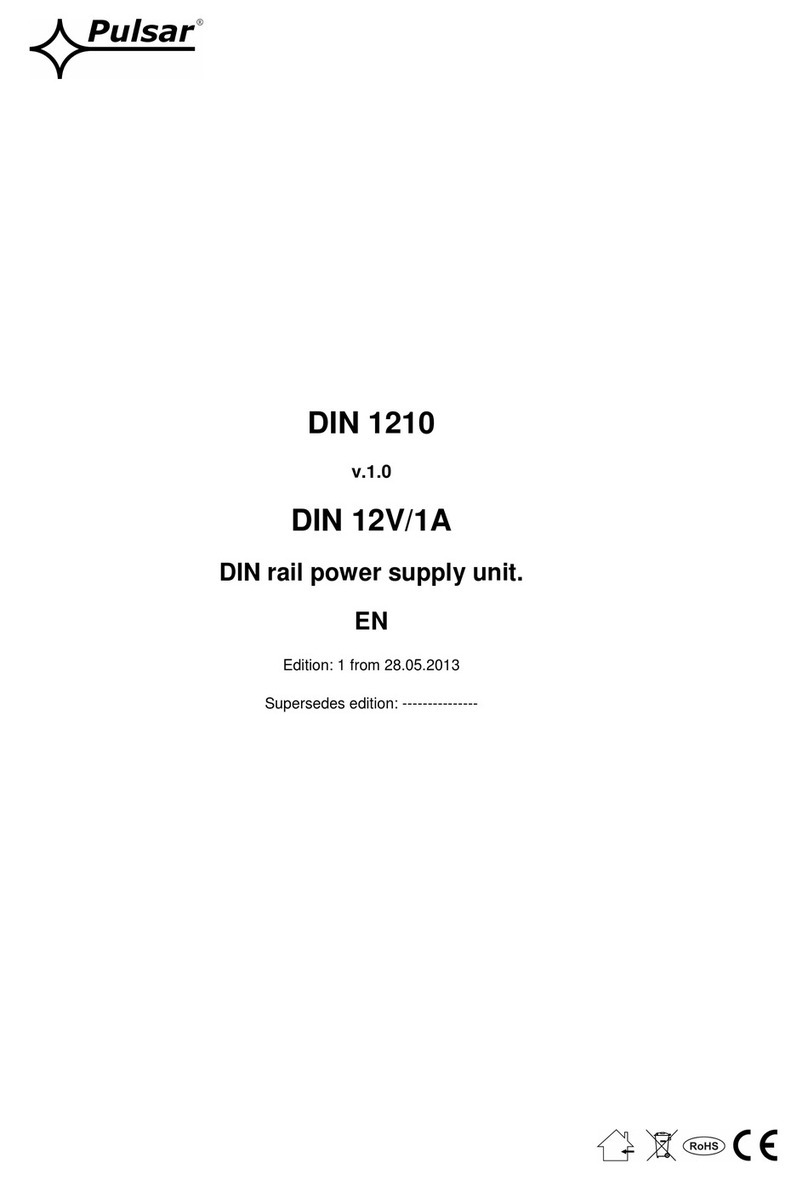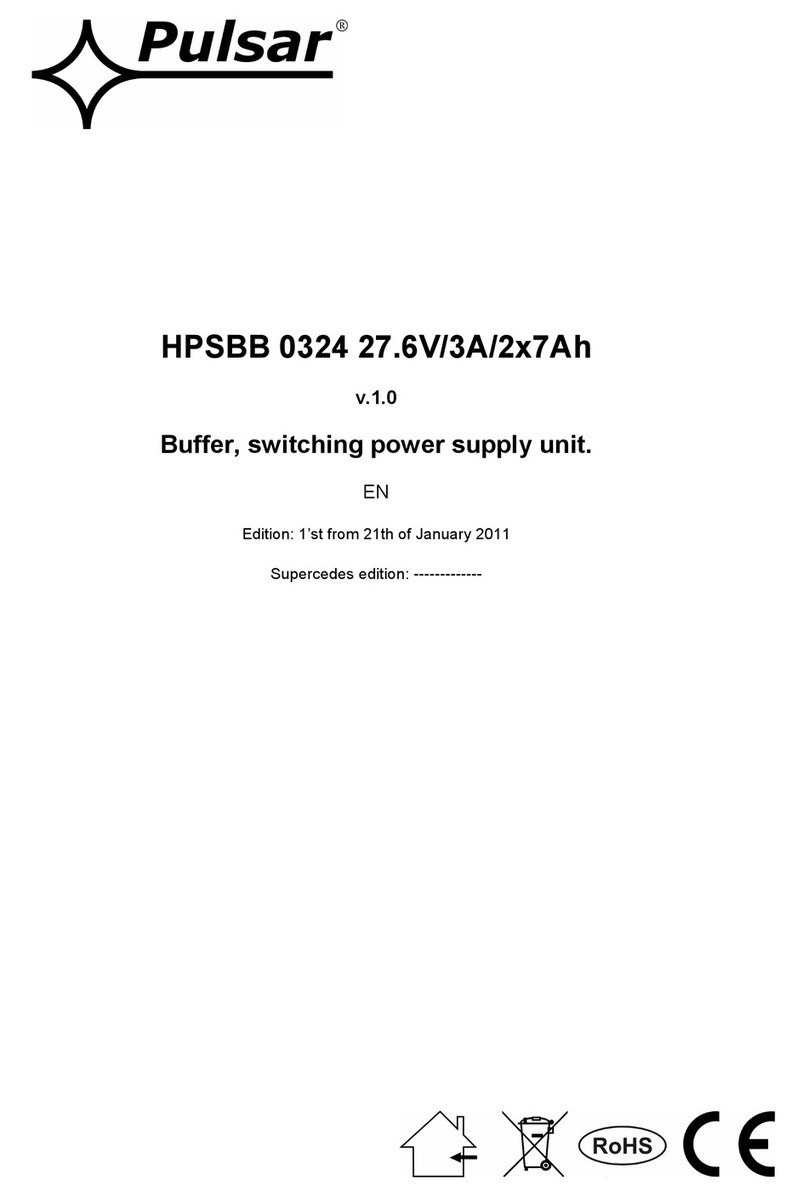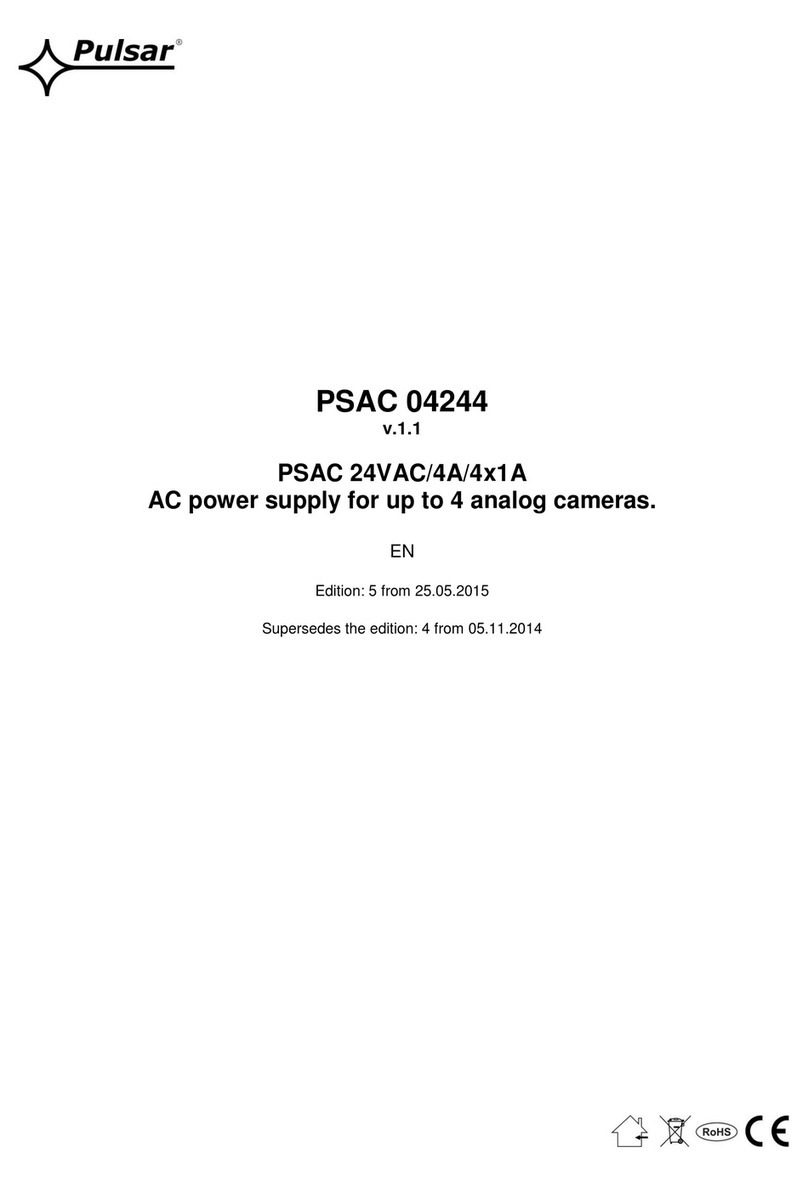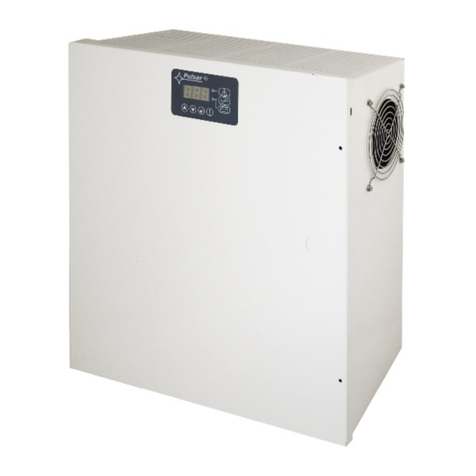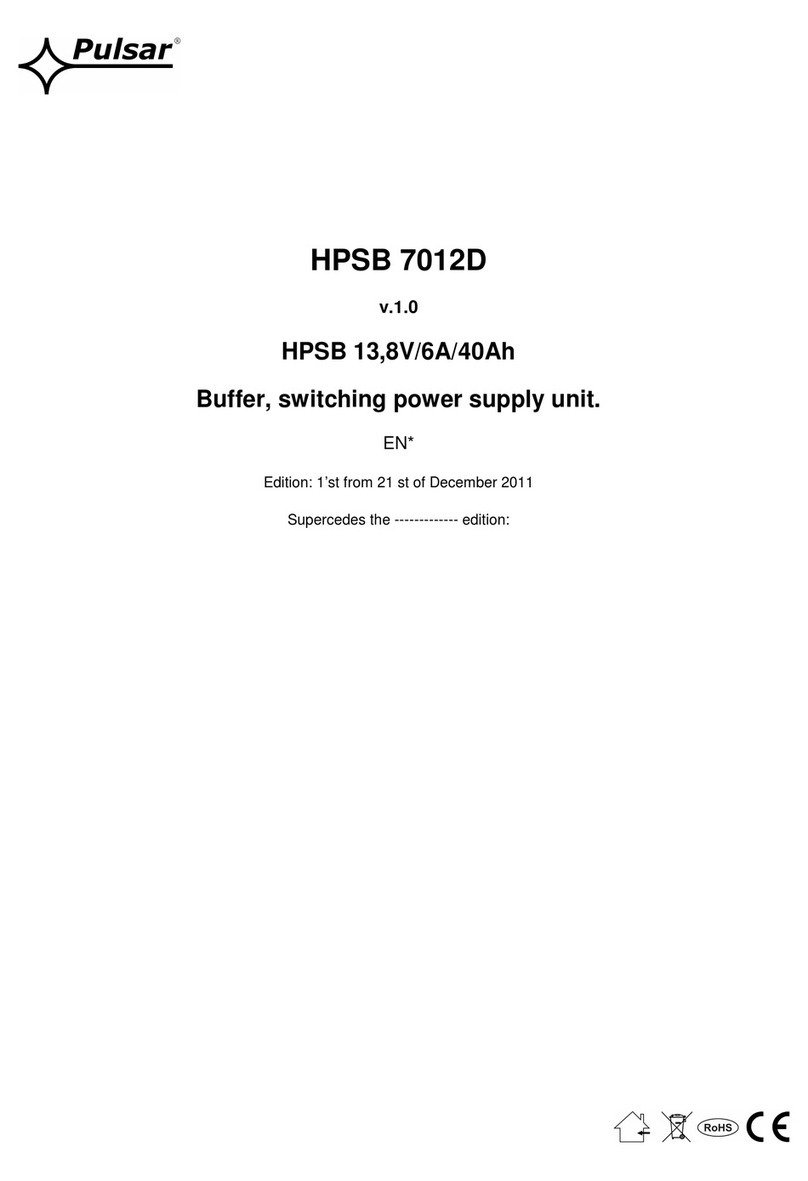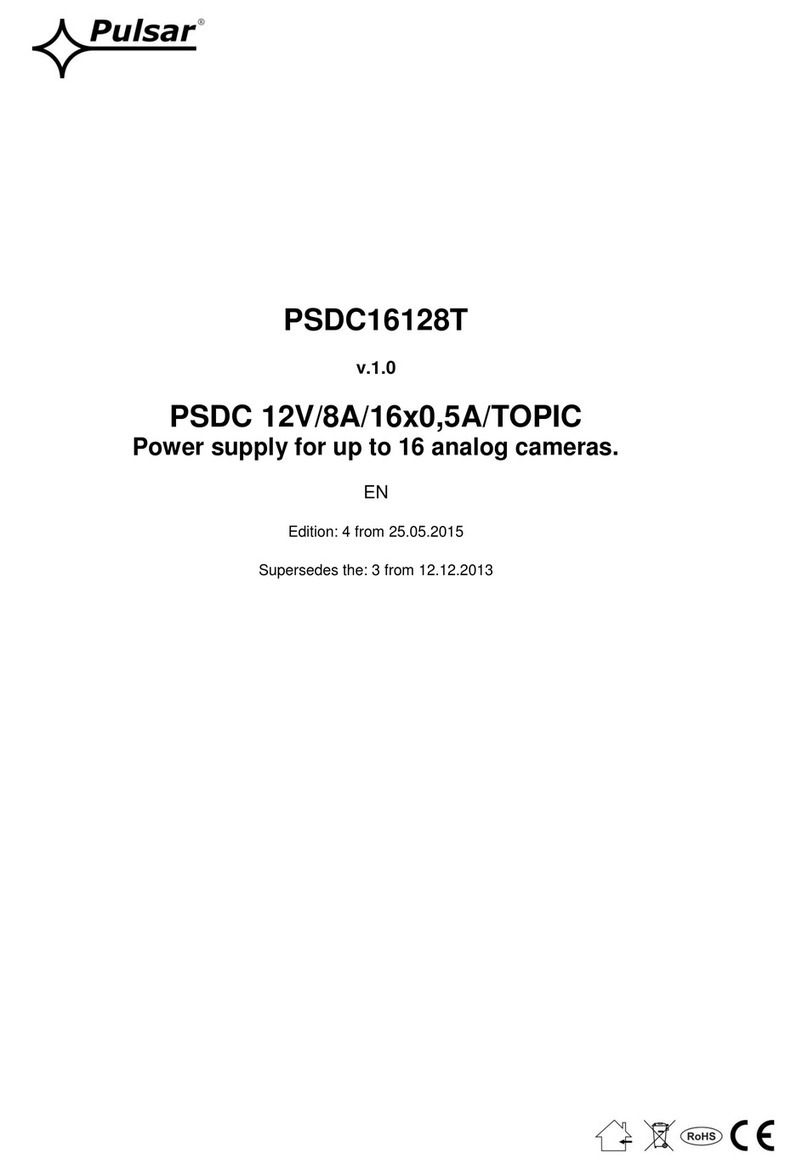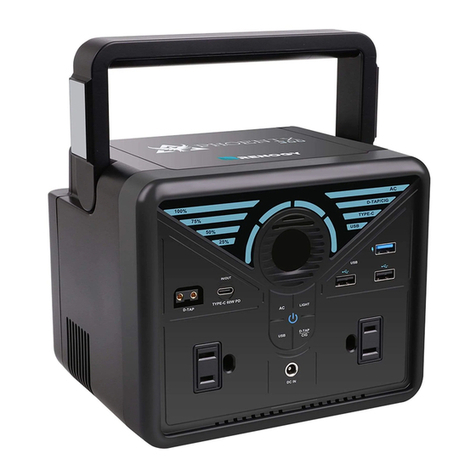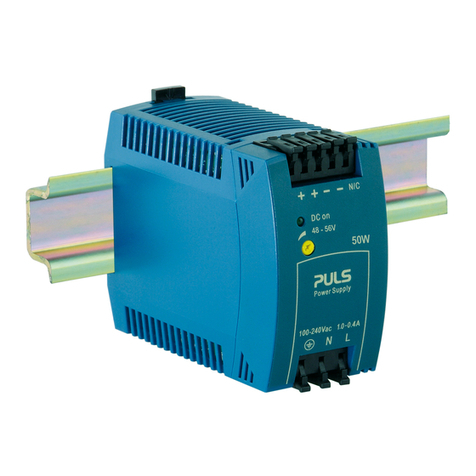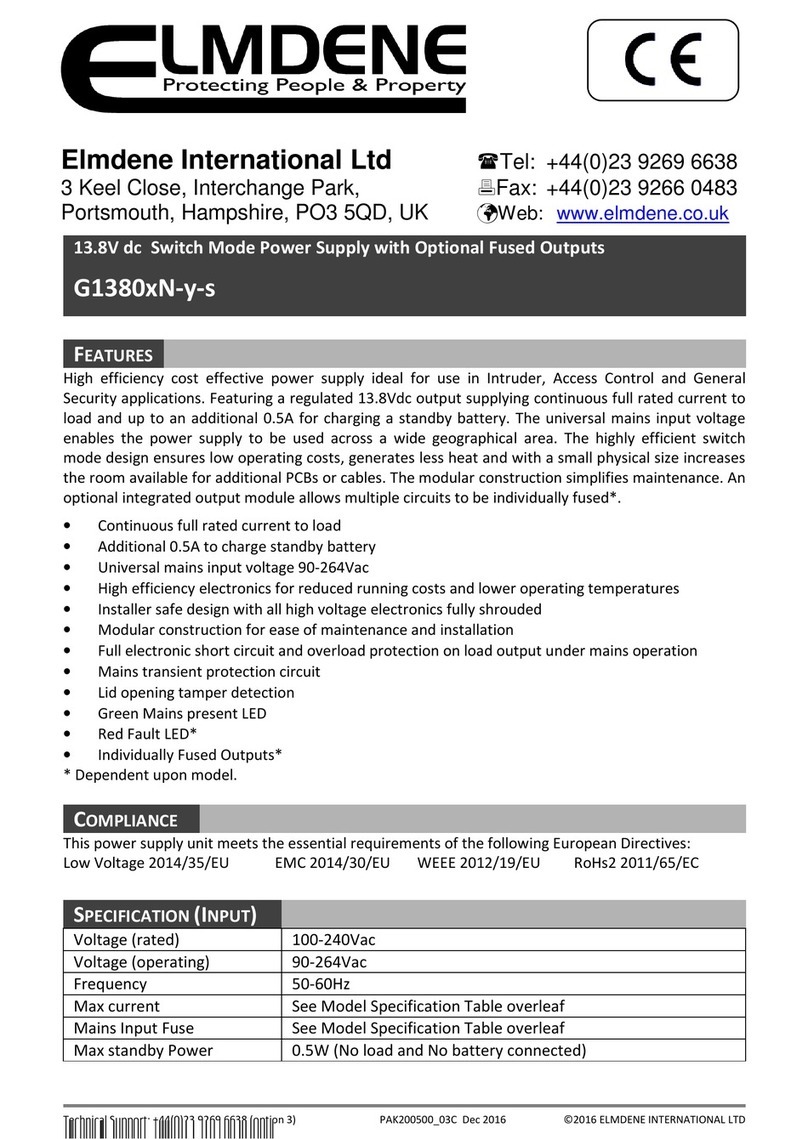
8
WEEE MARK
The waste electr c and electron c products do not m x w th general household
waste. There are separate collect on system for used electr c and electron c
products n accordance w th leg slat on under the WEEE D rect ve and s
effect ve only w th EU.
Not ce: he power supply unit is adapted for cooperation with the sealed lead-acid battery (SLA). After the operation period it
must not be thrown but recycled according to the applicable law.
GENERAL WARRANTY CONDITIONS
. Pulsar K. Bogusz Sp.j. (manufacturer) grants a two-year quality warranty for the equipment, starting from the date of
purchase placed on the purchase order.
2. Should such purchase order be missing when the claim is submitted, the three-year guarantee period is counted from the
date of the manufacturing of the device.
3. The warranty includes free-of-charge repairing or replacing with a functional equivalent (the selection is made by the
manufacturer) of the malfunctioning device, due to reasons attributable to the manufacturer, including manufacturing and
material defects, unless such defects have been reported beyond the warranty period (item and 2).
4. The equipment subject to warranty is to be brought to the place where it was purchased, or directly to the main office of
the manufacturer.
5. The warranty applies to complete equipment, including the type of defect specified in writing, using a properly filled
warranty claim.
6. Should the claim be accepted, the manufacturer is obliged to render warranty repairs, as soon as possible, however not
later that within 4 days from the delivering of the equipment to the service centre of the manufacturer.
7. The repair period mentioned in item 5 may be prolonged, if there is no technical capability to carry out the repairs, and in
the case that the equipment has been accepted conditionally, due to the failing of the warranty terms by the claimant.
8. All the services rendered by force of the warranty are carried out at the service centre of the manufacturer, exclusively.
9. The warranty does not cover the defects of the equipment, resulting from:
- reasons beyond the manufacturer's control,
- mechanical damage,
- improper storage and transport,
- use that violates the operation manual or equipment application,
- random events, including lightning discharges, failures of power networks, fire, flooding, high temperatures and chemical
agents,
- improper installation and configuration (at variance with the rules set forth in the manual),
0. Each confirmation of structural modifications or repairs, carried out beyond the service centre of the manufacturer, or any
modification of serial numbers or warranty labels, results in the loss of the rights resulting from the warranty.
. The liability of the manufacturer towards the buyer is limited to the value of the equipment, determined according to the
wholesale prices suggested by the manufacturer on the day of purchase.
2. The manufacturer shall not be responsible for the defects that resulted from the damaging, malfunctioning or inability to
operate the equipment, particularly, if such defects are the result of failing to abide by the recommendations and
requirements contained in the manual, or the use of the equipment.
Siedlec 150,
32-744 Łapczyca, Poland
el. (+48) 14-610-19-40, Fax. (+48) 14-610-19-50
e-mail: biuro@pulsar.pl, sales@pulsar.pl
http:// www.pulsar.pl
